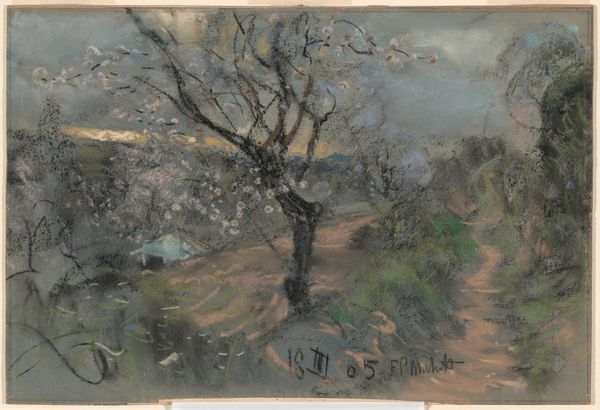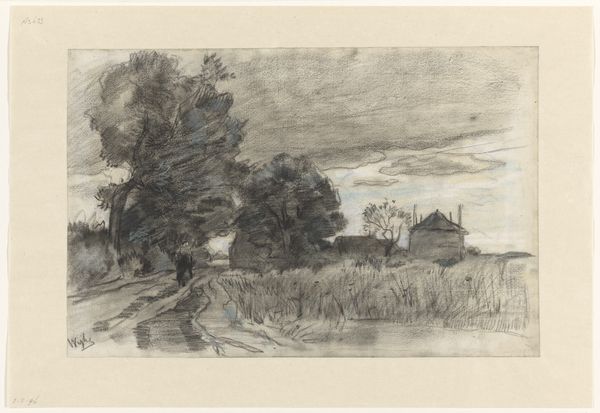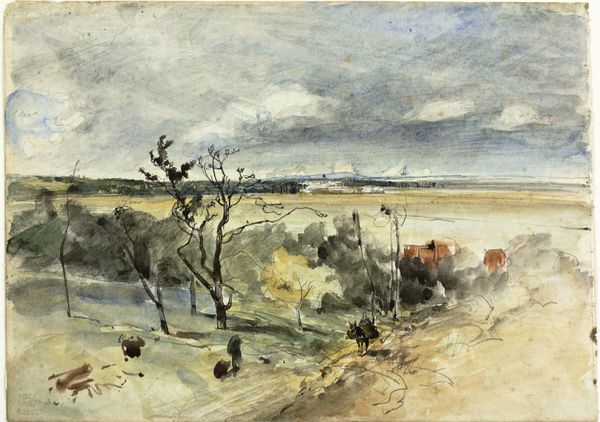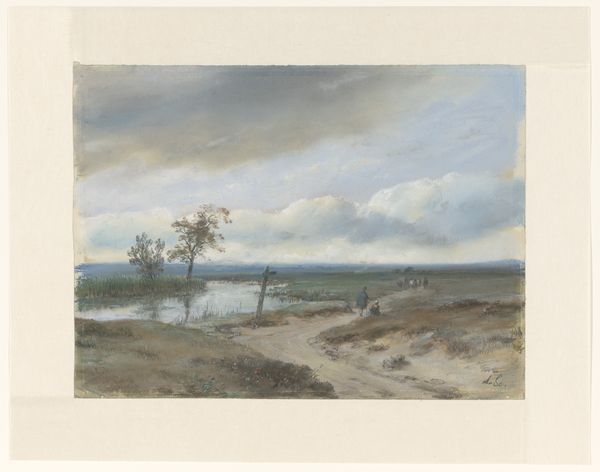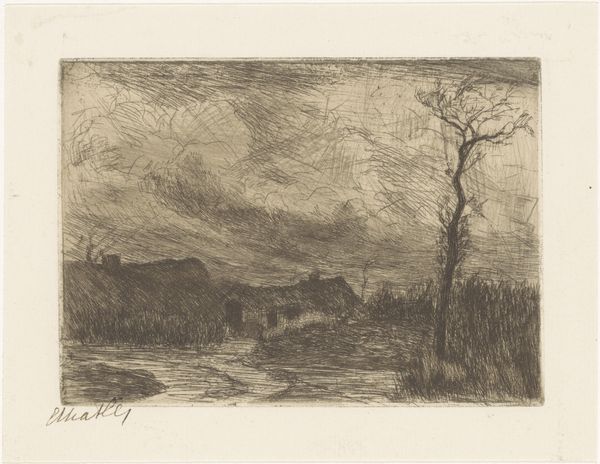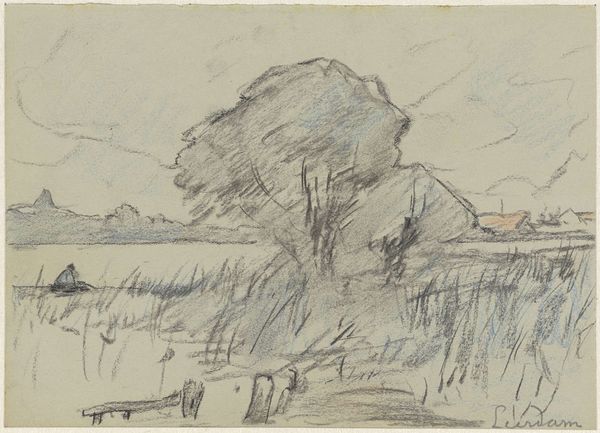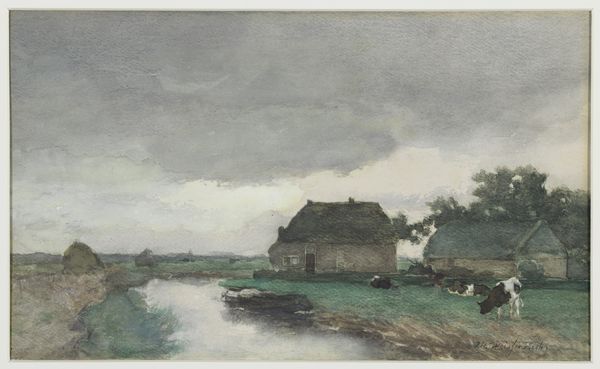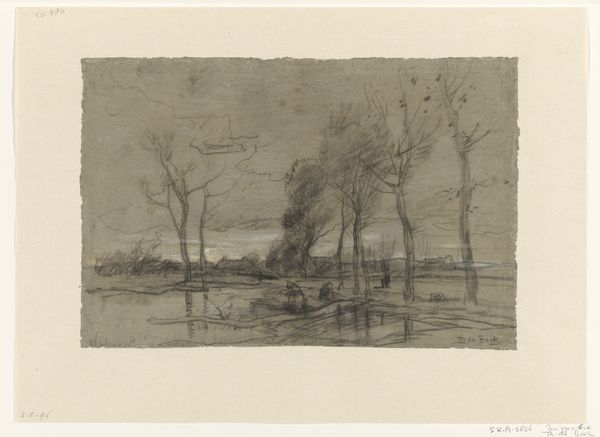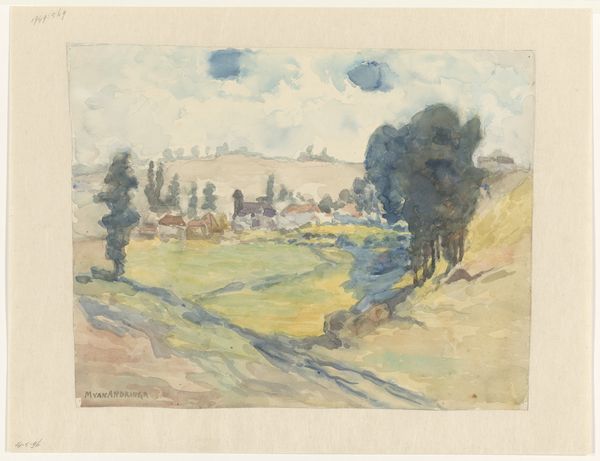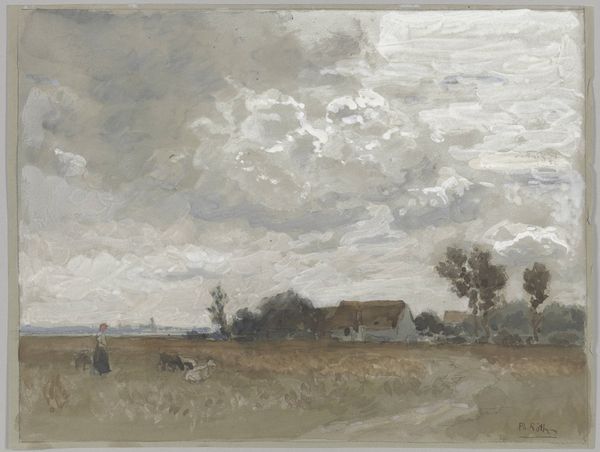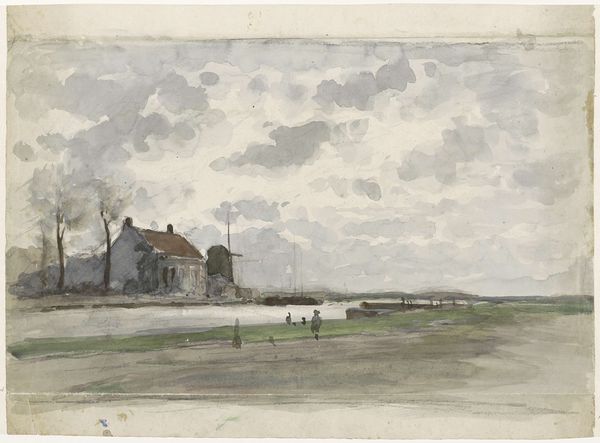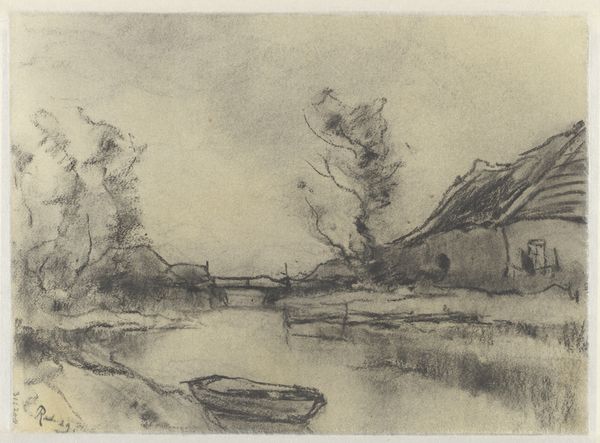
drawing, plein-air, watercolor
#
drawing
#
water colours
#
impressionism
#
plein-air
#
landscape
#
watercolor
#
cityscape
Dimensions: 8 1/2 x 12 1/4 in. (21.6 x 31.1 cm)
Copyright: Public Domain
Curator: Oh, this watercolor just hums with quiet melancholy, doesn’t it? It’s entitled "Landscape with a Cottage" by Théophile de Bock. He probably made it sometime between 1865 and 1904. Editor: My first impression is overwhelmingly…grey. Oppressive, even. Look at those clouds churning overhead and the murky foreground. There’s an almost suffocating feeling of enclosure despite being a landscape. Curator: Exactly! He paints the air itself like a heavy cloak. The cottage is almost consumed by the landscape; this is nature dwarfing humanity, not a cozy idyll. Editor: I'd say it's a loaded image. Consider how land ownership and access to resources were—and continue to be—powerful markers of privilege and social mobility. This humble dwelling nestled within a seemingly indifferent landscape makes you question ideas about home and belonging. Is this about vulnerability and marginalization? Curator: I get that read! Though for me, there’s something deeply peaceful in accepting your place in the natural order of things, in observing how the light touches a simple scene. Editor: Peaceful, or resigned? Are the figures outside the cottage presented with agency, or are they simply present, framed by this imposing natural scene? It begs the question, who does the land truly serve in this period of growing urbanization? Curator: What’s striking, I think, is de Bock’s commitment to observing shifting light conditions. It's a work completed ‘en plein air,’ trying to capture the transient moment, the emotional impression. A beautiful attempt, whether bleak or not. Editor: Absolutely, its historical context demands that we go deeper than aesthetic appreciation. It's more than just light and shadow—it reflects the anxieties and socio-economic realities that defined this era. Curator: Perhaps that’s the beauty of it; that even within the artist’s intent to render something ‘real,’ it holds space for our interpretation and for dialogues about society. Editor: Precisely, seeing art as an invitation, not an instruction manual. It calls for continuous questioning and analysis.
Comments
No comments
Be the first to comment and join the conversation on the ultimate creative platform.

